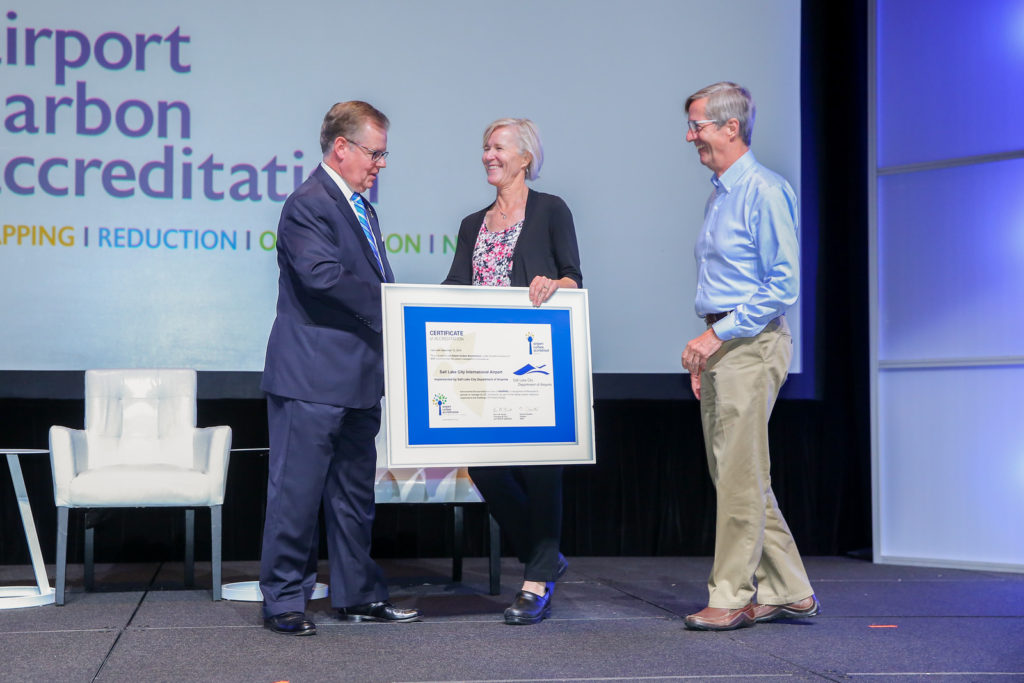Salt Lake City International Airport Renews its Airport Carbon Accreditation
- The Salt Lake City International Airport (SLC) has been recognized by Airports Council International (ACI) for renewing its Airport Carbon Accreditation. The Airport Carbon Accreditation is an independent program administered by WSP, an international consultancy appointed by ACI EUROPE to enforce the accreditation criteria for airports, and is overseen by an advisory board.
As part of the accreditation, airports must commit to reducing their emissions by making investments in heating and lighting efficiency as well as investing in electric, hybrid or gas-powered vehicles and transportation incentives.
SLC has implemented improvements and changes in infrastructure for more than a decade to reduce its carbon footprint. Following are some of the improvements made:
*Installed 12 Electric Vehicle (EV) dual port charging stations, with standard connectors to accommodate all models of electric vehicles. Each port supplies up to 7.2 kilowatts of power. In the first month of service, the EV charging stations saved 1.26 tons of greenhouse gas emissions.
*Equipped SLC runways, taxiways, roadways and the facility with more than 5,500 LED fixtures, which will save approximately 3,000,000 kWh of electricity annually.
*Reduced electricity use at the airport by 10 percent since 2009.
*Increased miles driven by alternatively fueled vehicles by 29 percent.
*Reduced greenhouse gas emissions by 14 percent per passenger.
*Installed water bottle filling stations throughout the airport and filled 6 million bottles with 938,000 gallons of water, saving 1,480 cubic yards of plastic from ending up in landfills.

Salt Lake City International Airport (SLC) Executive Director Bill Wyatt and Airport Environmental Programs Manager Patty Nelis receive SLC’s Airport Carbon Accreditation renewal.
In addition, The New SLC, opening in 2020, has been designed to meet high environmental standards and strives to achieve a LEED Gold certification from the U.S. Green Building Council. A “Roadmap to Net Zero,” is in development, which gives designers a plan for how the facility can generate as much power as it uses.
The Airport Carbon Accreditation program has identified four levels of certification: mapping, which measures the carbon footprint; reduction of the airport operator’s carbon footprint; optimization, which engages others on the airport site to reduce their CO2; and neutrality, which offsets any residual CO2 emissions from the airport operator.
SLC is currently at the “reduction” level, meaning it has proven it has reduced its carbon emissions. Check out this interactive map to see how other airports around the world are doing and how SLC compares.

